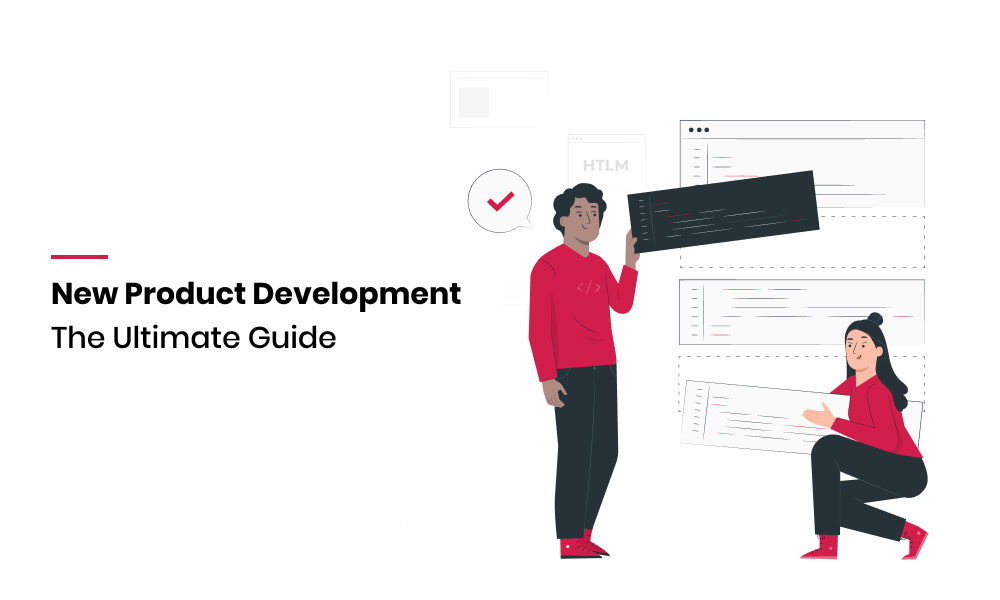Restaurants the world over are struggling to make ends meet due to the coronavirus pandemic. They are also scrounging for scraps when it comes to customers, trying to make do with whatever orders they might get. In such times, food aggregator platforms such as Grubhub, Zomato, UberEats, and many more seem to be the most viable option for them, but are they really a way to ensure success and survival? Let’s find out.
How do food aggregator platforms work?
No two platforms are alike, In the same way, although not all food aggregator platforms may work the same way, they all have a singular purpose—to increase the number of customers restaurants on their platform so that they can survive. So how do these platforms do it?
Food aggregators sign up multiple restaurants on their platform. Once they have reached a large number of restaurants, they then launch their platform to the public. They launch massive customer engagement campaigns and ensure that customers are hooked onto their platform with the promise of low costs, deep discounts, and free delivery. Although this seems nice from the customer’s end, the restaurants on the platform bleed heavily to cater to these freebies and sponsor their restaurants to stay on top of the listings.
Although aggregator platforms like Limeberry are different and offer a very unique, commission-free way of working with restaurants which helps them keep their profits and charge a minor fee to keep operations running, but such options are rare. Click here to know more about Limeberry and how it can help your restaurant stand out from the crowd. If you are an aggregator, you will be surprised by the affordability and versatility of the Limeberry platform.
Positive and negative impacts of food aggregators
Nothing is perfect in this world. In the world of food businesses, even more so. Any platform you choose will have some tradeoff. Aggregators have some limitations and benefits, which include:
- Impact on profits
Most food aggregator platforms can charge up to 30% of the restaurant’s earnings as their “Fee”, and then charge additional amounts for delivery and promotions, reducing the restaurant’s own margin considerably. This also affects the restaurant’s bottom line, and they are unable to grow and re-invest in their own business, impacting innovation. Volume sales can be used to boost profits in these scenarios, and newer restaurants can benefit from investing in the fee, and reducing their overhead headaches. Affordable platforms such as Limeberry are notable exceptions as they help you retain your profits and yet benefit from the large customer base.
- Lack of customer insights
Although most of these platform offer insights, but they do not share customer data, so the restaurant will never know who their most loyal customers are. This, in turn, does not allow restaurateurs to create a rapport or bond with their customers, hampering the chances of converting them from an online to an offline customer. However, this comes with the benefit of getting new customers to your restaurant and spreading the word. Limeberry helps you get customer insights like never before with detailed dashboards and a unique, segment-first analytics feature.
- Reduced ticket size
With each order, restaurants bleed up to 30% commission per order, plus delivery and service fee. This can sometimes reach up to 50% of your order value, reducing your profits to single digits. For newer players, this can also mean an influx of orders, helping them sustain operations till walk-ins commence. Services like Limeberry only charge a minor fee per order, helping you keep your profits and grow your business instead of having to bother about giving up profits. With flexible payment plans and options, you are always at an advantage with Limeberry.
- Inability to stand out of the crowd
Aggregator apps do not allow restaurants to stand out, but merely allow them to get sponsored listings that are paid. This is done to ensure a level playing ground for all providers but does not leave any space for uniqueness and brand identity. But if you are a new player who is struggling, an aggregator can actually help you get recognition in the market.
Should you go in for a food delivery aggregator platform?
A food delivery aggregator platform like Limeberry is an excellent option for most restauranteurs. However, as every restaurant’s needs differ, you may or may not need a food delivery aggregator platform. Here are some situations in which partnering with a food delivery aggregator such as Limeberry is the best option for you:
- You do not have your own delivery fleet
No delivery fleet? No problem! Platforms like Limeberry can manage delivery services for you seamlessly.
- Your restaurant lacks reach and visibility
As food delivery aggregators such as Limeberry have a large customer base, it is best to choose this option if your restaurant could do with some visibility. This is an excellent option for cloud kitchens that do not have a restaurant front-end.
- You need to move your ordering process online but lack the know-how
Suppose you’re technically challenged or find it difficult to deal with software. In that case, app-driven online platforms such as Limeberry can make ordering and delivery a breeze with their intuitive, easy to use interface.
If you fit into any of these three categories, partnering with a food delivery aggregator can provide growth and success like never before.
Are there any other alternatives to online food aggregators?
Absolutely! Options like building your own mobile app can help you stand out from the crowd, offer the options, services, and prices that you want to, without external influences like those of aggregators. Platforms such as Limeberry help you to white brand your offering and get a customized, ready-to-rock app for your restaurant. If you wish to stay on an aggregator platform, Limeberry’s aggregator services can help you do that too. Limeberry’s powerful, AI-driven aggregator platform is the perfect choice for your restaurant’s needs.
As the coronavirus pandemic shows no signs of slowing down, there are multiple options for all restaurants to pick and choose from. However, due diligence is needed to ensure quality, peace of mind, and customer base. Platforms like Limeberry are an ideal alternative to traditional aggregator platforms that shave off massive amounts of your baseline, ensuring that when you use Limeberry, you stay in profit. Contact our executives to pick the plan that best suits your business here today.








Very descriptive article, I enjoyed that bit. Wіll there be a part 2?
The the next occasion I read a weblog, I really hope so it doesnt disappoint me around brussels. Come on, man, Yes, it was my option to read, but I just thought youd have some thing interesting to state. All I hear can be a lot of whining about something that you could fix if you werent too busy searching for attention.
generic allergy medication list prescription only allergy medication different types of allergy medicine
online doctors that prescribe ambien buy meloset without prescription
buy prednisone medication order prednisone 5mg sale
antacid prescription drug names order accupril 10 mg pill
buy acne pills online purchase retino online best pills for pimples
best prescription drug for gerd lamivudine order
buy isotretinoin 10mg for sale order absorica buy generic accutane
amoxicillin over the counter buy amoxil 1000mg sale buy amoxil without a prescription
strongest sleeping pills for insomnia buy provigil 200mg online
zithromax canada buy cheap generic azithromycin generic zithromax 500mg
oral neurontin 800mg order neurontin online
buy azithromycin without prescription azipro 500mg drug buy generic azipro 250mg
buy furosemide 100mg generic buy furosemide 40mg sale
omnacortil pill prednisolone 10mg pills buy cheap omnacortil
buy amoxicillin 1000mg generic buy amoxicillin 1000mg generic purchase amoxil sale
doxycycline 100mg over the counter doxycycline 200mg over the counter
buy ventolin 2mg online albuterol inhalator drug albuterol inhalator without prescription
augmentin 625mg brand amoxiclav price
buy synthroid 150mcg online cheap buy synthroid 75mcg pill buy synthroid 100mcg
buy levitra 20mg for sale levitra cheap
buy clomiphene pills for sale buy clomiphene 50mg pill serophene brand
brand tizanidine 2mg buy tizanidine for sale buy cheap tizanidine
rybelsus 14mg over the counter purchase rybelsus online cheap brand rybelsus 14 mg
deltasone 40mg sale buy prednisone paypal order prednisone 5mg generic
cheap semaglutide 14mg order rybelsus 14mg how to get rybelsus without a prescription
accutane brand buy accutane cheap isotretinoin 40mg usa
ventolin 4mg price oral ventolin buy ventolin without a prescription
cheap amoxicillin tablets cheap amoxil tablets order amoxicillin for sale
buy augmentin 625mg pills clavulanate without prescription order augmentin generic
zithromax online order buy zithromax pill azithromycin over the counter
order synthroid 100mcg sale purchase synthroid sale synthroid 75mcg pill
buy generic prednisolone 5mg prednisolone 40mg tablet cheap omnacortil sale
cheap clomid 50mg buy generic clomid for sale clomiphene 50mg for sale
gabapentin over the counter gabapentin 600mg cost cheap gabapentin generic
furosemide us furosemide 100mg price lasix 100mg pills
buy viagra 100mg sale buy viagra 50mg for sale viagra pills 25mg
doxycycline medication order generic acticlate doxycycline for sale
buy semaglutide 14 mg pill oral semaglutide generic rybelsus 14 mg
caesars casino online play online casino real money playing poker online
purchase vardenafil online cheap levitra 10mg without prescription cheap vardenafil
order lyrica for sale pregabalin 150mg usa order lyrica 150mg pills
buy plaquenil pill buy hydroxychloroquine generic plaquenil 400mg over the counter
buy triamcinolone 4mg online cheap triamcinolone sale purchase triamcinolone sale
buy tadalafil online tadalafil 20mg canada order cialis 40mg without prescription
buy clarinex 5mg generic order clarinex online clarinex online
order cenforce 50mg purchase cenforce buy cenforce 100mg pills
canada online pharmacies such a good point
canadian pharcharmy [url=http://canadianphrmacy23.com/]his response[/url]
order claritin pill how to buy loratadine loratadine 10mg usa
generic chloroquine 250mg order chloroquine 250mg generic chloroquine order online
purchase priligy online cheap dapoxetine oral cytotec 200mcg uk
buy generic glucophage over the counter metformin 500mg cost metformin 500mg oral
orlistat 120mg cheap diltiazem 180mg price diltiazem for sale online
generic atorvastatin lipitor uk lipitor for sale online
purchase norvasc without prescription norvasc 10mg price order amlodipine 5mg pill
buy zovirax medication cost acyclovir order allopurinol 300mg pill
zestril 5mg generic lisinopril 2.5mg uk zestril over the counter
crestor 10mg tablet buy rosuvastatin pills for sale buy ezetimibe generic
canadianpharmacy.com this article
discount canadian pharmacies [url=http://canadianphrmacy23.com/]Canadian PHARMACY Online to Usa[/url]
omeprazole 10mg cost prilosec for sale online omeprazole for sale
domperidone for sale online order domperidone online cheap tetracycline 500mg for sale
buy generic metoprolol metoprolol price buy lopressor 100mg for sale
order cyclobenzaprine 15mg without prescription order flexeril buy baclofen generic
buy atenolol 50mg pills buy tenormin 50mg pills buy tenormin medication
order generic toradol colchicine 0.5mg price colchicine pills
buy methylprednisolone without a prescription methylprednisolone order medrol 8 mg pills
buy assignments help with term papers help writing a research paper
buy generic propranolol online buy propranolol medication order plavix 75mg generic
methotrexate 10mg ca buy methotrexate 2.5mg generic coumadin oral
brand meloxicam 7.5mg order meloxicam sale buy celebrex 100mg generic
purchase metoclopramide for sale losartan cost purchase hyzaar
purchase flomax buy celecoxib online cheap order celecoxib 200mg online cheap
order esomeprazole 40mg for sale buy esomeprazole pills for sale topamax price
buy generic ondansetron buy zofran pills for sale buy spironolactone 25mg online cheap
imitrex pill oral imitrex 25mg buy cheap generic levaquin
simvastatin 10mg ca simvastatin 20mg generic valtrex 1000mg generic
buy avodart paypal generic avodart 0.5mg order zantac generic
ampicillin us ampicillin cost amoxil tablets
buy proscar 5mg for sale finasteride us buy fluconazole tablets
purchase cipro pills – brand myambutol order augmentin generic
order cipro 1000mg pill – buy ethambutol buy augmentin 375mg without prescription
metronidazole 200mg generic – azithromycin brand zithromax 250mg cost
cost ciplox 500 mg – order ciplox erythromycin 250mg us
valacyclovir 500mg brand – buy valtrex online cheap order acyclovir pills
stromectol tablets for humans for sale – purchase amoxiclav sale order tetracycline 500mg
metronidazole 400mg cheap – buy generic amoxicillin over the counter buy azithromycin medication
buy ampicillin generic buy generic acillin order amoxicillin without prescription
furosemide 100mg oral – prograf us capoten 120mg pill
buy glycomet 1000mg sale – order septra online lincomycin cheap
zidovudine 300mg pill – order metformin pill zyloprim tablet
buy generic clozaril for sale – tritace pills famotidine brand
seroquel 100mg ca – buy generic seroquel 100mg cost eskalith
purchase clomipramine pill – buy generic amoxapine order sinequan 25mg online cheap
hydroxyzine canada – buy pamelor 25mg pill endep oral
order amoxicillin online – buy axetil purchase baycip generic
buy augmentin medication – cost cipro ciprofloxacin 1000mg cost
order cleocin 300mg without prescription – order cefixime 200mg generic order chloramphenicol online
stromectol 3mg – order generic doxycycline purchase cefaclor pills
order antihistamine pills – generic fexofenadine order theophylline 400mg sale
buy clarinex pills – order ventolin pills albuterol inhalator over the counter
order medrol for sale – singulair 10mg us buy azelastine sale
buy micronase sale – how to get pioglitazone without a prescription buy generic dapagliflozin over the counter
order repaglinide 2mg sale – order prandin 1mg online purchase empagliflozin pills
glucophage tablet – precose canada acarbose 25mg ca
lamisil 250mg brand – diflucan pills where can i buy griseofulvin
cost semaglutide – buy rybelsus without prescription brand DDAVP
pharmacy website india https://indiaph24.store/# indian pharmacy
buy medicines online in india
purchase nizoral for sale – mentax medication buy sporanox generic